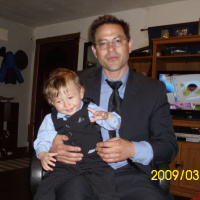
Eric V. Kirk asks Adrian Kamada, Stacey Eads, Michael Acosta…
Restorative Justice
Do you support the concept of restorative justice? Under what situations or types of cases would you be willing to consider it? What model or models of restorative justice would you be interested in implementing or experimenting with?
— Eric V. Kirk
Response

Michael Acosta
I support the concept of victim-initiated restorative justice, but only as a victim’s choice, and only after 1) request by the victim, 2) written advisement to the victim of rights, 3) if deemed appropriate, the opportunity for the victim to speak with independent, private or court-appointed counsel, depending on the gravity and complexity of legal issues involved, 4) concurrence by the defendant and defense counsel, and 5) time waivers so that the case can be resumed if restorative measures do not work out.
So that victims are aware of this alternative, I would develop a standardized written advisement and have it given to victims at a case’s inception, for cases deemed eligible (discussed below). If not already represented by private counsel, the DA’s office would also be able to assist by making application on behalf of the victim for court-appointed counsel of limited scope to independently advise the victim on the ramifications of opting for restorative measures. Any restorative efforts would occur during a deferment of prosecution, obviously with the defense’s stipulation, so that prosecution could be resumed if either party withdraws or reports to the DA’s office that restorative measures were not successful.
Before any of this would be implemented, I would submit documentation of the proposed program, as outlined above, with draft Policies and Procedures and related forms to County Counsel and the County’s Risk Management Office for comment, with a courtesy copy to the Board of Supervisors. After revision and re-circulation (and not discounting the possibility that the effort may be dropped based on any valid and defeating concerns), a pilot program would launch and be available to victim’s in eligible misdemeanor cases. I would anticipate that the pilot program would be available within the first 90 days of my taking office, absent complications or total abandonment due to legality or risk management concerns.
That being said, prudence requires my disclaimer that any restorative justice program must be reconciled with existing California laws. In particular some of you may recall that California Penal Code §§1377-1379 already contains civil compromise procedures for misdemeanor cases, but excepts several categories of crime from use of those procedures. The statutory scheme for civil compromises in California is very similar to restorative justice measures, though perhaps not nearly as culturally-based. Depending on construction of laws, legislative intent, and any related case law, the types of cases in which a restorative approach could legally be used may be restricted. Of particular concern is California Penal Code §1379 which states:
“No public offense can be compromised, nor can any proceeding or prosecution for the punishment thereof upon a compromise be stayed, except as provided in this Chapter.”
This statute may be a legal roadblock to the expansion of restorative justice in California, and so, rather than making case law, a legislative effort should be pursued in Sacramento by proponents of restorative justice if their belief is that the current civil compromise provisions of Penal Code §§1377-1379 are overly restrictive. Until then, any restorative justice program under my auspices would have to operate in a manner that was consistent with those code sections.
So, yes I am open to the concept of the DA’s office facilitating a victim-initiated restorative justice approach to case disposition, where it is consistent with the law and advisable by risk management.
